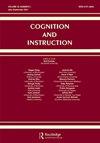整合视点与空间:手势、身体动作、语言和物质资源的分层如何塑造学习
IF 2.3
1区 心理学
Q2 PSYCHOLOGY, EDUCATIONAL
引用次数: 3
摘要
手势被认为是认知的组成部分和整体。手势对学习的价值取决于它如何在背景中其他相关资源的基础上收集意义——简而言之,身体如何与周围环境相结合。本文以层叠为重点,提出了视点与空间推理相结合的理论;发展一种具体的方法来记录和理解学生空间模型的现场构建;并为空间复杂概念的教学提供了新的启示。我们首先研究本科生如何开玩笑地用手势描述工程系统组件的第一人称运动,走出来描绘系统如何从外部出现,同时跟踪系统组件如何在身体周围的空白空间的开放画布中进行空间交互。能够兼顾这三者的学生——从角色视角转换到观察者视角,同时保持空间的连贯组织——能更好地学习工程概念。然后,我们在一年级和二年级学生假装扮演蜜蜂的课堂上的无脚本话语中研究了这一过程。第二项研究将空间推理和观点之间的相互作用的分析扩展到计划外的师生话语(包括随着时间的推移谈话和行动的调整)和丰富的材料设置中。总之,本文提出了一个具身学习框架,将观点和空间推理与学习设计的含义结合起来。本文章由计算机程序翻译,如有差异,请以英文原文为准。
Integrating Viewpoint and Space: How Lamination across Gesture, Body Movement, Language, and Material Resources Shapes Learning
Abstract Gesture is recognized as part of and integral to cognition. The value of gesture for learning is contingent on how it gathers meaning against the ground of other relevant resources in the setting—in short, how the body is laminated onto the surrounding environment. With a focus on lamination, this paper formulates an integrated theory of viewpoint and spatial reasoning; develops an embodied approach to documenting and understanding the live construction of students’ spatial models; and offers new implications for the teaching of spatially complex concepts. We start with a study of how undergraduate students playfully gesture the first-person movements of components of an engineering system, step out to depict how the system appears from the outside, and all the while track how the components of the system spatially interact in the open canvas of empty space around the body. Students who manage all three—switching from character viewpoints to observer viewpoints while maintaining a coherent organization of space—better learn the engineering concept. We then examine this process in the unscripted discourse of a classroom of 1st and 2nd graders pretend-playing as bees. This second study extends the analysis of interactions between spatial reasoning and viewpoint into unplanned teacher-student discourse (including adjustments in talk and action over time) and a materially rich setting. In all, the paper formulates an embodied learning framework that integrates viewpoint and spatial reasoning with implications for learning design.
求助全文
通过发布文献求助,成功后即可免费获取论文全文。
去求助
来源期刊

Cognition and Instruction
Multiple-
CiteScore
7.90
自引率
12.10%
发文量
22
期刊介绍:
Among education journals, Cognition and Instruction"s distinctive niche is rigorous study of foundational issues concerning the mental, socio-cultural, and mediational processes and conditions of learning and intellectual competence. For these purposes, both “cognition” and “instruction” must be interpreted broadly. The journal preferentially attends to the “how” of learning and intellectual practices. A balance of well-reasoned theory and careful and reflective empirical technique is typical.
 求助内容:
求助内容: 应助结果提醒方式:
应助结果提醒方式:


